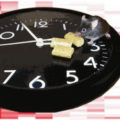
Researchers from Rensselaer Polytechnic Institute, Purdue University, and the Russian Academy of Sciences have answered their critics by using sound waves to induce nuclear fusion without the need for an external neutron source, according to a paper in Physical Review Letters. The results address one of the most prominent questions raised after publication of the team’s earlier results in 2004, suggesting that “sonofusion” may be a viable approach to producing neutrons for a variety of applications.
The sonofusion technique involves bombarding a mixture of acetone and benzene with oscillating sound waves, causing bubbles in the mixture to expand and violently collapse. The team explains that sonofusion produces a shock wave powerful enough to fuse nuclei together. Fusion produces tell-tale neutrons, so when the team detected neutrons they felt they had made a significant breakthrough. But the technique was challenged by a number of critics who suggested that because the researchers used an external neutron source to produce the bubbles, neutrons detected as evidence of fusion might have been left over from the external source.
“To address the concern about the use of an external neutron source, we found a different way to run the experiment,” says Rensselaer’s Richard T. Lahey Jr., co-author of the paper. “The main difference here is that we are not using an external neutron source to kick the whole thing off.”
In addition to resolving the external neutron source, the team also had to stave off criticisms regarding their methods of data acquisition. Back in 2002, when the team first published their results in Science and the sonofusion debate began, their data was questioned because it was suggested that they used inadequate instrumentation.
To verify that fusion had actually occurred, the researchers used three independent neutron detectors and one gamma ray detector. All four detectors produced the same results: a statistically significant increase in the amount of nuclear emissions when compared to background levels. The results were confirmed again after repeating the experiments with the detectors at twice the original distance from the device, where the number of neutrons decreased by a factor of about four. The new data is consistent with predictions made by the “inverse square law,” which the researchers say provides further evidence that fusion neutrons were in fact produced inside the device.
The experiment was specifically designed to address a fundamental research question, not to make a device that would be capable of producing energy, Block says. At this stage the new device uses much more energy than it releases, but it could prove to be an inexpensive and portable source of neutrons for sensing and imaging applications.


















Comments are closed.